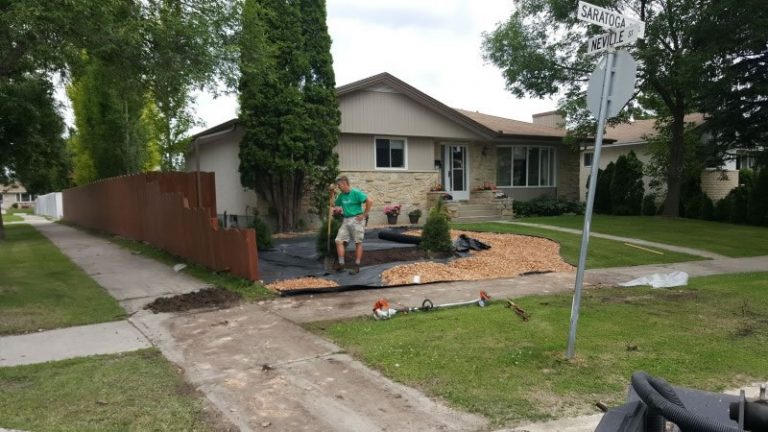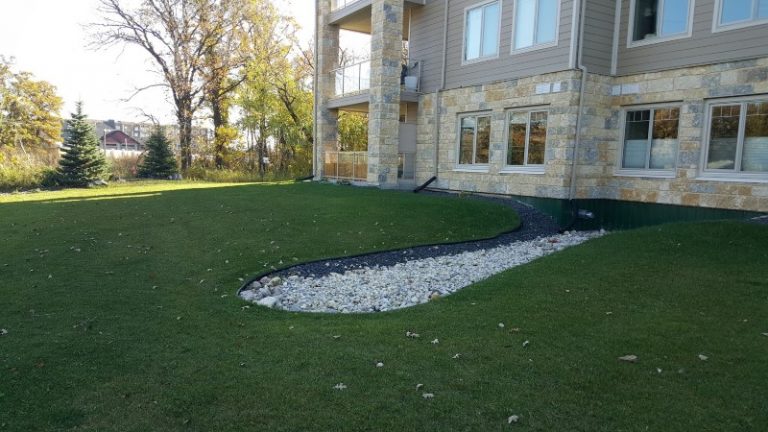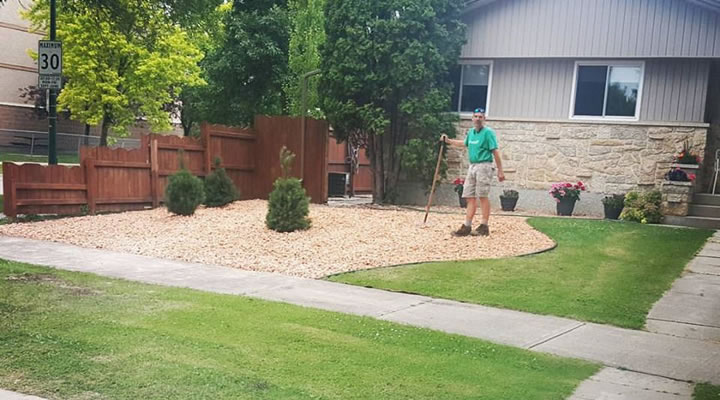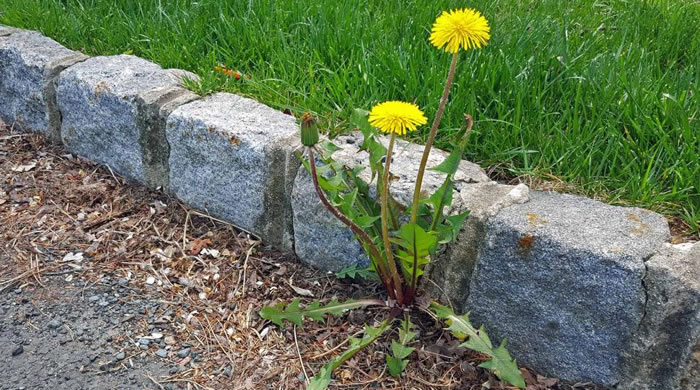Properly Grading Your Winnipeg Property For A New Lawn
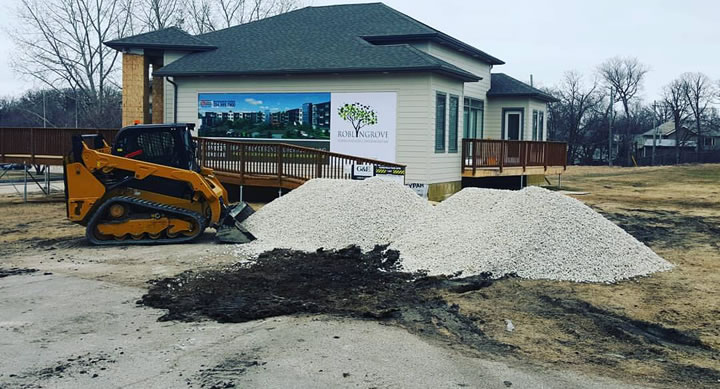
Have you just bought a new home in the Winnipeg area that has drainage problems? Are you building a home on a new lot that needs to be properly graded before you can install your lawn and landscaping? If your lawn and landscape are important to you, then proper grading and drainage should also be at the top of your list of priorities. Improper lot grading can and will cause poor surface drainage. The runoff from heavy rain or even melting snow during the spring can result in standing water at the low spots in your property, foundation damage, and even leaky basements.
Acquiring a property or building on a property with drainage issues can be a homeowners worst nightmare. Depending on the size of the property and the complexity of the drainage issues, it’s often not a project a homeowner would want to take on by themselves without the proper equipment and some knowledge about proper grading techniques.
In Winnipeg there are also lot grading by-laws that may or may not apply to your specific situation. You can read up on the by-laws here: Winnipeg Lot Grading By-Laws.
The number one rule when grading your property is to make sure the slope of the yard is going AWAY from your home. The slope away from your home in all directions should be dropping at least two to three inches for every ten feet, this would be a decent grade. If the drop in slope is greater than twelve inches every 10 feet you could consider building a low retaining wall to keep your soil from eroding away during heavy rain-fall. The main goal is you want the water to run away from your foundation and preferably into a properly installed drainage system that channels the water away.
This can be easier said than done depending on what might be located around the perimeter of your home. Do you have a gas meter mounted on the side of your home with exposed or buried gas lines running into your home? Do you have a basement with egress windows? Is there an existing drainage system that has failed? These will all pose challenges that are going to need to be thought out.
First off, in the situation where you have gas meters or gas lines on the side of the home it’s important to contact MB1Call to be sure of the locations of the gas lines. If you’re hiring a landscaper for this project and they’ll be using equipment on the property like a skid-steer or mini-excavator you don’t want them striking a hot line, it will be very expensive to fix and create hassles you don’t want to be dealing with. Most professional landscapers will already know about MB1Call and will contact them to ensure they won’t be working near a hot-line, if there is an active gas line nearby the safest thing to do is to use shovels to uncover the line before work starts.
How Do You Find Your Slope?
One quick way to see what kind of slope your dealing with is to run a string line with a level on it from the highest point of your slope to the lowest point of your slope. When you have the line level, you can measure from the ground at your lowest point up to the height of the string. This will show you how aggressive your slope is and can give you or your landscaper a good idea on how much material is going to be required.
Final Grading
When you’ve got the amount of slope you’re dealing with you can more accurately estimate the amount of fill that will be required to get the job done. Now it’s a matter of bringing in the soil and actually spreading it out. It’s always a good idea to have the soil dumped in the lowest spot, from there it can be raked out by hand (very tedious) or you can use machinery to do the bulk of the work much faster, using rakes as a final step to make the grade just perfect, especially up next to your landscape fixtures like a garden, walkway, driveway, or patio.
The finished grade, after soil and sod installation should match the level of your existing landscape fixtures including walkways, patios, and any already existing lawn. If you plan on seeding your lawn or laying sod on top of the new fill the grade should be approximately one to two inches lower than existing landscape features but this can depend on the thickness of the sod or the type of seed you are going to use.
Some More Property Grading Tips
- If the area you’re grading isn’t easily accessible and the soil must be moved by machine or hand you’ll probably have to dump the soil somewhere else on your property and move it. In some cases, it’s a section of your driveway or maybe another section of the lawn. It’s always a good idea to lay down tarps to dump the fill material on so you can contain the mess and prevent yourself from having to spend several hours on clean up after the project is finished.
- Choose your soil or fill carefully. If it’s a new lawn that you are after you want to be using “loam” soil or sometimes called “lawn” soil. Loam soil is a great mix of soil that is nutrient rich and due to it’s sandy content it can help promote proper settling and good drainage.
- Be aware of any underground utilities such as electrical or gas lines that you’ll have to work around.
- If you are grading up against a home with a basement and there are windows that might be covered by soil or fill it’s a good idea to have window wells installed to keep the soil away from the windows.
Terrace Property Maintenance Ltd. Provides Property Grading Services Throughout Winnipeg, MB
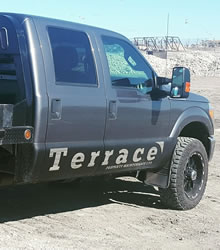 Terrace Property Maintenance Ltd. is a local landscaping company based out of Winnipeg. We specialize in property grading services for homeowners who are looking to establish the grading for their property whether it’s a new lot or an existing lot that needs to be re-graded to solve drainage problems. Using our mini-excavator or our skid-steer we’re able to quickly solve most property and lot grading issues quickly and efficiently.
Terrace Property Maintenance Ltd. is a local landscaping company based out of Winnipeg. We specialize in property grading services for homeowners who are looking to establish the grading for their property whether it’s a new lot or an existing lot that needs to be re-graded to solve drainage problems. Using our mini-excavator or our skid-steer we’re able to quickly solve most property and lot grading issues quickly and efficiently.
If you’d like to receive an estimate for grading your lot for a new lawn or landscaping give us a call (204) 202-6939 or fill out our online contact form and we’ll get right back to you.

